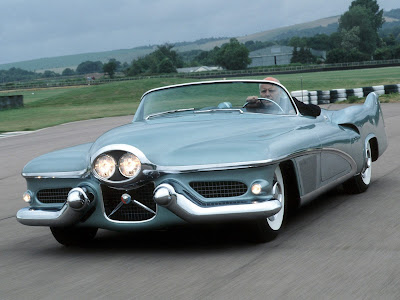Harley J. Earl
Harley J. Earl started his career at General Motors in the design department as Head of Design. After proving his skills to be invaluable, General Motors appointed him to become Vice President of the corporation.
The move by GM made Mr. Earl the first-ever appointed top executive of a major corporation in American history. Every executive prior to Earl was grandfathered into their positions.
So what made him so desirable?
What made General Motors go so far out of character to appoint Mr. Earl and his abilities to a Vice President position?
Not only was Earl’s ability to design vehicles incredible, but he also had a knack that no one else did, he could tap into what the consumer wanted.
Instead of designing vehicles that General Motors, Chrysler, and Ford deemed as profitable, he wanted to design and build vehicles that consumers wanted to see and drive. This idealism made General Motors nervous, but ultimately they trusted in Earl with good outcomes. GM saw the rise in public excitement, vehicle sales, and of course, profits.
Here are just four of Harley J. Earl’s important contributions to the automotive industry.
1. Freeform Sketching and Hand Sculpted Clay Models: Harley J. Earl was a coachbuilder by trade. By honing and adjusting his craft, he became a pioneer of car design by introducing the use of freeform sketching and hand-sculpting clay models. Bringing this skill to the industry helped create some of the finest bodylines that we’ve come to know and love today.
2. Chevrolet Corvette: Earl decided that America needed a real sports car, one that resembled the English and European sports cars that were getting built overseas after WWII.
With Earl’s already established reputation in the automotive industry, he didn’t think he would get too much pull from other executives by presenting the thought of taking on such a risky project as creating a sports car, and he didn’t.
He went to Chevrolet’s general manager, Ed Cole, with a secret project called “Project Opel." With complete confidence in Harley Earl, Mr. Cole gave him the okay with no hesitation. Not more than a year later, in 1953, America would get its first glimpse at what would become the most iconic American sports car ever built, the Chevrolet Corvette.
3. First Concept Car: The 1939 Buick Y-Job was the first-ever concept car built. Earl recognized early the need to get the public's reaction to a vehicle's appearances and performance before one is put into production.
Under Earl’s supervision and direction, the General Motors styling division created something similar to what they hoped would become the next production car for Buick. With enough interest and feedback from the public, GM put a vehicle into production that turned out to be very successful. With such success with the “concept car”, to this day the concept is used every year by every large automotive corporation in the world.
4. Tailfins: If you like the look of classic cars, then you know you like the look of tailfins. They’re stylish, they’re sexy, and the design of them are credited to Harley J. Earl. First appearing on the Frank Hershey 1948 Cadillac, they became an iconic look that was used throughout the 1950s and 1960s.
After the public accepted the look, Detroit car builders, especially Chrysler, competed to see who could design the most complex, biggest tailfins that could fit on the back of a car while still looking awesome.
An American Automotive Pioneer
Some of the coolest inventions and designs the public gets to enjoy in the automotive industry today are credited to Harley J Earl. Without him, who knows if we would have the Corvette, the ‘57 Chevy, and concept cars among many other great things we get to enjoy credited to Earl.
You don’t hear about him too much, but we should always remember one of the great pioneers of the automotive industry.








